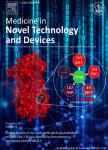Distribution of mechanical strain in equine distal metacarpal subchondral bone:A microCT-based finite element model
作者机构:Department of Biomedical EngineeringMelbourne School of EngineeringUniversity of MelbourneAustralia U-Vet Equine CentreMelbourne Veterinary SchoolFaculty of Veterinary and Agricultural SciencesUniversity of MelbourneMelbourneAustralia
出 版 物:《Medicine in Novel Technology and Devices》 (医学中新技术与新装备(英文))
年 卷 期:2020年第6卷第2期
页 面:19-25页
学科分类:08[工学] 080502[工学-材料学] 0805[工学-材料科学与工程(可授工学、理学学位)]
主 题:Subchondral bone μFE modelling Impact load Cartilage-bone Tissue mineral density Heterogeneity
摘 要:Microdamage accumulation and adaptation of subchondral bone subjected to intensive cyclic loading are important processes associated with catastrophic bone failure,and joint degeneration in athletic humans and *** the tissue-level,they lead to a spatial variation in bone tissue mineral density(TMD)which affects the response of the bone to mechanical *** the spatial distribution of mechanical load within the subchondral bone is critical for understanding the mechanism of the joint ***,a gradient of TMD and mechanical properties has been reported under unconfined compression in osteochondral *** the present study,we used micro computed tomography(μCT)-based finite element(FE)models of cartilage-bone to investigate the gradient of strain in the subchondral bone(SCB)from the third metacarpal(MC3)condyle of racehorses under simulated in situ ***-destructive mechanical testing of specimens under high-rate compression provided the apparent-level modulus of *** models were analysed using unconfined and confined boundary *** FE-predicted apparent-level gradient of modulus across the SCB thickness correlated well with the experimental results(R^(2)=0.72,p0.05).The highest strain occurred in the most superficial SCB(0.5–2.5 mm deep to the cartilage-bone interface)under the simulated in-situ compression through articular *** findings of this study provide an estimation for the spatial distribution of mechanical strain within SCB in-situ in the presence of heterogeneous bone tissue which is commonly observed in joints subjected to intensive cyclic loading.



